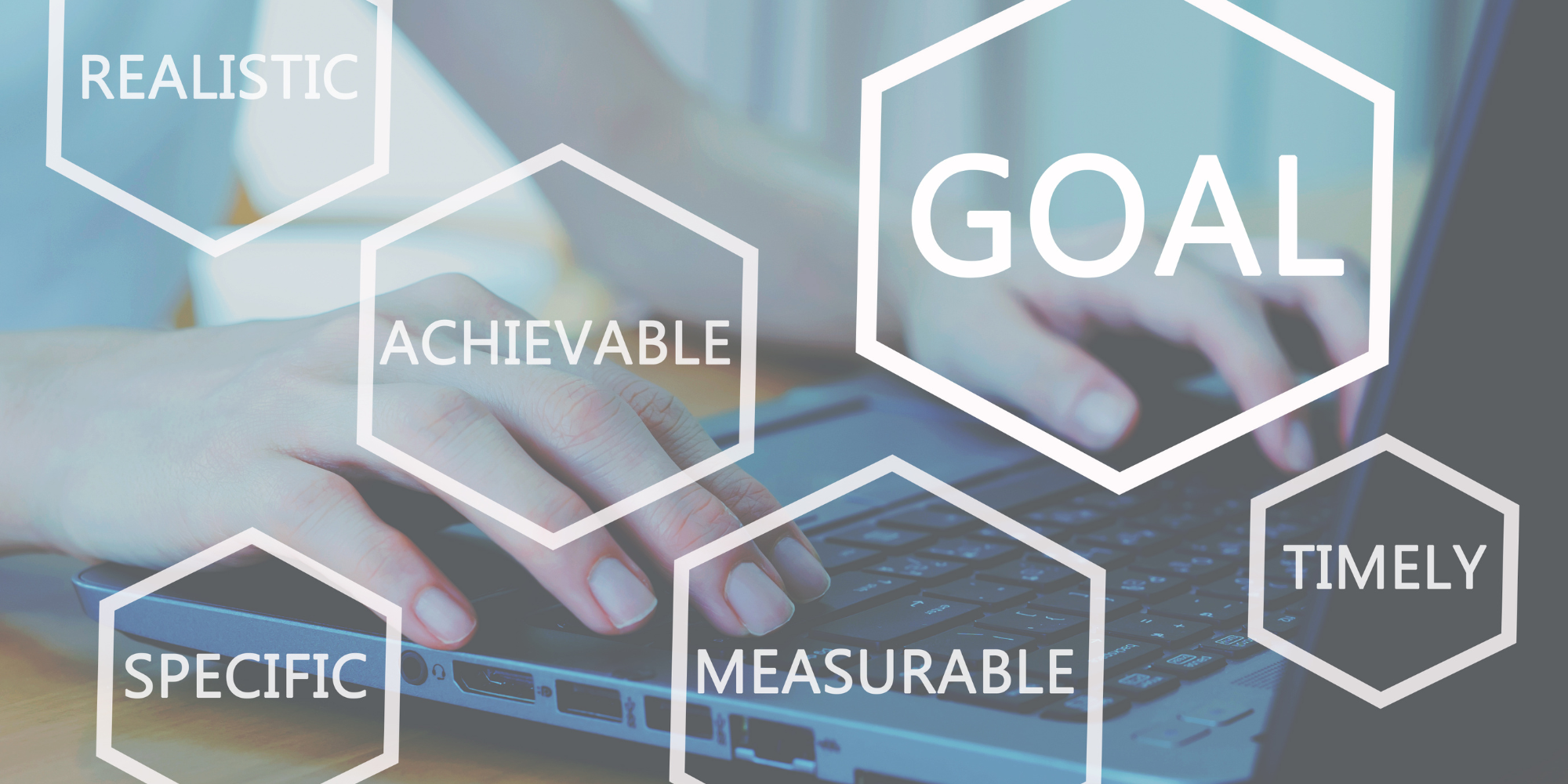Share this
Setting SMART Goals for a Successful Digital Signage Project

Do you have an exciting idea for a digital signage project that's still in its early stages? You might find the array of details that need to be addressed quite daunting, given the significance they hold in ensuring your project's success. Keep in mind that your planning's quality has a tremendous influence on your project's result. Today's blog post is here to guide you on establishing SMART goals - a crucial step that, when executed properly, can speed up your project completion time and significantly increase its likelihood of success. Keep reading to discover:
- What SMART goals are
- The importance of setting SMART goals in a digital signage project
- Common mistakes to avoid when setting goals for digital signage projects
What Are SMART Goals?
When you're just getting started with digital signage, it's very important to make sure you are approaching your project from a holistic perspective. We have already covered how to use MagicINFO with a holistic mindset in another blog, so check it out if you wish to understand what this approach entails.
SMART is an acronym that represents a framework for creating effective goals. It stands for Specific, Measurable, Achievable, Relevant, and Time-bound. These elements ensure that the goal is clear and achievable within a set timeframe.
Be specific
When setting specific goals for your digital signage project, it's crucial to outline the precise outcomes you're aiming for. For instance, your goal could be "We aim to increase brand awareness among young adults in the local area through captivating digital signage content." This goal details the who (young adults in the local area), the what (increasing brand awareness), and the how (captivating digital signage content).
Make your goals measurable
Creating measurable goals is about quantifying the outcomes you desire. A measurable goal could be "Our digital signage will increase store traffic by 20% over the next three months." The metric here is the 20% increase in-store traffic, making it easy to track and measure progress.
Setting up achievable goals
It's important to be realistic and consider the resources at your disposal. For example, if your budget only allows for two digital signage screens but your goal requires ten, you need to reassess your goals or find ways to increase your resources. An achievable goal might be "We will implement two digital signage displays in high-traffic areas of our store."
Keep it relevant
Goals should align with your broader objectives. If your business's main aim is to enhance the customer experience, then your digital signage project could focus on providing useful information or interactive elements for customers. For example, "Our digital signage will offer interactive wayfinding to improve customer experience in our store."
Don't forget to make your goals time-bound
Setting a timeframe keeps your project on track and helps to maintain momentum. Your goal could be, "By the end of Q3, our digital signage will be fully operational and displaying targeted marketing content." This deadline-driven goal keeps your project moving forward and gives you a clear endpoint for achieving your objective.

The Importance of SMART Goals in a Digital Signage Project
Implementing SMART goals in a digital signage project offers several benefits. They provide clarity and direction, ensuring that everyone involved in the project understands exactly what is expected. This can eliminate confusion and increase the efficiency of your project team.
SMART goals also serve as an excellent motivational tool. Because these goals are specific and time-bound, they can help to create a sense of urgency and drive. Knowing exactly what needs to be achieved and by when can inspire the team to work diligently towards the goals.
Another significant benefit of SMART goals is that they are measurable and thus, make it easier to track progress. Regular progress updates can help to keep the project on track and allow for adjustments as needed. Furthermore, the achievement of these goals can be easily assessed, facilitating the evaluation of the project's success.
For more information about what makes a successful digital signage project, consider reading this article.
Common Mistakes When Setting Goals for Digital Signage Projects
In setting goals for digital signage projects, there are a few common mistakes that can impact the overall success of your project. One prevalent error is setting vague or unrealistic goals. Without clear, specific targets, measuring progress and achieving outcomes becomes challenging. Setting unrealistic goals can lead to frustration and demotivation among your team members when they are not attainable despite best efforts.
Another mistake is failing to align the project's goals with the broader business objectives. If the digital signage doesn't support the company's mission, it may not contribute meaningfully to its overall success. Here is more information on how to successfully introduce digital signage into your business.
Neglecting the target audience's needs and preferences is another pitfall. The digital signage content must be relevant and engaging to the audience it's intended for, otherwise, it might not achieve the desired impact. At MagicInfo Services by ScreenCom, we often write about how to improve your content strategy. Some useful resources worth checking out are the ebook "Level up your content strategy in 5 steps" and if you have more time, you can delve into this guide teaching you how to create digital signage content.
Lastly, overlooking the importance of time-bound goals can result in the project losing momentum or stalling. It's essential to set a realistic timeline to keep the project on track and to maintain focus and motivation.
To put it in a nutshell, by ensuring your goals are Specific, Measurable, Achievable, Relevant, and Time-bound, you're setting your digital signage project up for success. Each SMART goal provides clear guidance for what your project needs to accomplish, and by when to achieve its ultimate objectives.
You have reached the end of today's blog. For more information on how to use digital signage and MagicINFO to level up your project schedule a meeting with one of our MagicINFO experts.
Share this
- Signage strategy (72)
- Content management (51)
- Solutions (44)
- Content creation (41)
- Device management (31)
- Content automation (29)
- Hardware (28)
- Getting started (27)
- Server management (25)
- MagicINFO Explained (23)
- Software (18)
- Security (14)
- Blog Post (12)
- Content design (9)
- Company and services (8)
- User management (6)
- Innovations in digital signage (5)
- Data management (4)
- Digital Signage Strategy (3)
- Government (2)
- MagicINFO Cloud (2)
- AI (1)
- Consumer Experience in retail (1)
- Content Starting Package (1)
- Digital Signage in Retail (1)
- LATEST (1)
- LOOKBEYOND Topics (1)
- Sustainability (1)
- november 2025 (1)
- oktober 2025 (1)
- juni 2025 (2)
- mei 2025 (3)
- april 2025 (2)
- maart 2025 (1)
- februari 2025 (4)
- januari 2025 (1)
- november 2024 (1)
- oktober 2024 (2)
- september 2024 (1)
- augustus 2024 (2)
- juli 2024 (3)
- juni 2024 (3)
- mei 2024 (6)
- april 2024 (4)
- maart 2024 (5)
- februari 2024 (3)
- januari 2024 (4)
- december 2023 (4)
- november 2023 (4)
- oktober 2023 (5)
- september 2023 (3)
- juli 2023 (5)
- juni 2023 (8)
- mei 2023 (9)
- april 2023 (8)
- maart 2023 (9)
- februari 2023 (7)
- januari 2023 (8)
- december 2022 (5)
- november 2022 (7)
- oktober 2022 (9)
- september 2022 (6)
- augustus 2022 (8)
- juli 2022 (6)
- juni 2022 (6)
- mei 2022 (7)
- april 2022 (2)
- maart 2022 (3)
- februari 2022 (1)
- januari 2022 (4)
- december 2021 (2)
- november 2021 (4)
- oktober 2021 (4)
- september 2021 (6)
- augustus 2021 (3)
- juli 2021 (6)
- juni 2021 (3)
- mei 2021 (3)
- april 2021 (3)
- maart 2021 (4)
- februari 2021 (3)
- januari 2021 (3)
- december 2020 (4)
- november 2020 (3)
- oktober 2020 (2)
- september 2020 (3)
- augustus 2020 (2)
- juli 2020 (3)
- juni 2020 (3)
- mei 2020 (1)
- april 2020 (4)
- maart 2020 (3)
- februari 2020 (2)
- januari 2020 (3)
- december 2019 (2)
- oktober 2019 (2)
- september 2019 (1)
- juni 2019 (3)
- mei 2019 (1)
- april 2019 (1)
- maart 2019 (3)

No Comments Yet
Let us know what you think